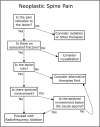Global Approach to the Patient with Pain in Interventional Radiology
- PMID: 30402017
- PMCID: PMC6218264
- DOI: 10.1055/s-0038-1673362
Global Approach to the Patient with Pain in Interventional Radiology
Figures












Similar articles
-
Effects of relaxing therapies on patient's pain during percutaneous interventional radiology procedures.Ann Palliat Med. 2018 Oct;7(4):455-462. doi: 10.21037/apm.2018.07.02. Epub 2018 Jul 20. Ann Palliat Med. 2018. PMID: 30180736
-
[Radiology: from diagnostic tool to interventional procedures].Ned Tijdschr Geneeskd. 2011;155:A3069. Ned Tijdschr Geneeskd. 2011. PMID: 21447227 Dutch.
-
The management of peri- and postprocedural pain in interventional radiology: a narrative review.Pain Manag. 2017 Nov;7(6):523-535. doi: 10.2217/pmt-2017-0024. Epub 2017 Nov 10. Pain Manag. 2017. PMID: 29125398 Review.
-
The Utility of Peripheral Nerve Blocks in Interventional Radiology.AJR Am J Roentgenol. 2016 Oct;207(4):718-730. doi: 10.2214/AJR.16.16643. Epub 2016 Jul 6. AJR Am J Roentgenol. 2016. PMID: 27385059
-
Sedation and analgesia in interventional radiology: Where do we stand, where are we heading and why does it matter?Diagn Interv Imaging. 2019 Dec;100(12):753-762. doi: 10.1016/j.diii.2019.10.002. Epub 2019 Nov 6. Diagn Interv Imaging. 2019. PMID: 31706790
Cited by
-
Minimally Invasive Treatment Strategies for Metastatic Disease of the Skeleton: Current Concepts.Curr Oncol Rep. 2025 Jun 11. doi: 10.1007/s11912-025-01696-w. Online ahead of print. Curr Oncol Rep. 2025. PMID: 40498266 Review. No abstract available.
References
-
- Kurup A N, Morris J M, Callstrom M R. Ablation of musculoskeletal metastases. AJR Am J Roentgenol. 2017;209(04):713–721. - PubMed
-
- Patel I J, Pirasteh A, Passalacqua M A et al.Palliative procedures for the interventional oncologist. AJR Am J Roentgenol. 2013;201(04):726–735. - PubMed
-
- Wallace A N, McWilliams S R, Connolly S E et al.Percutaneous image-guided cryoablation of musculoskeletal metastases: pain palliation and local tumor control. J Vasc Interv Radiol. 2016;27(12):1788–1796. - PubMed
-
- Greenwood T J, Wallace A, Friedman M V, Hillen T J, Robinson C G, Jennings J W. Combined ablation and radiation therapy of spinal metastases: a novel multimodality treatment approach. Pain Physician. 2015;18(06):573–581. - PubMed

